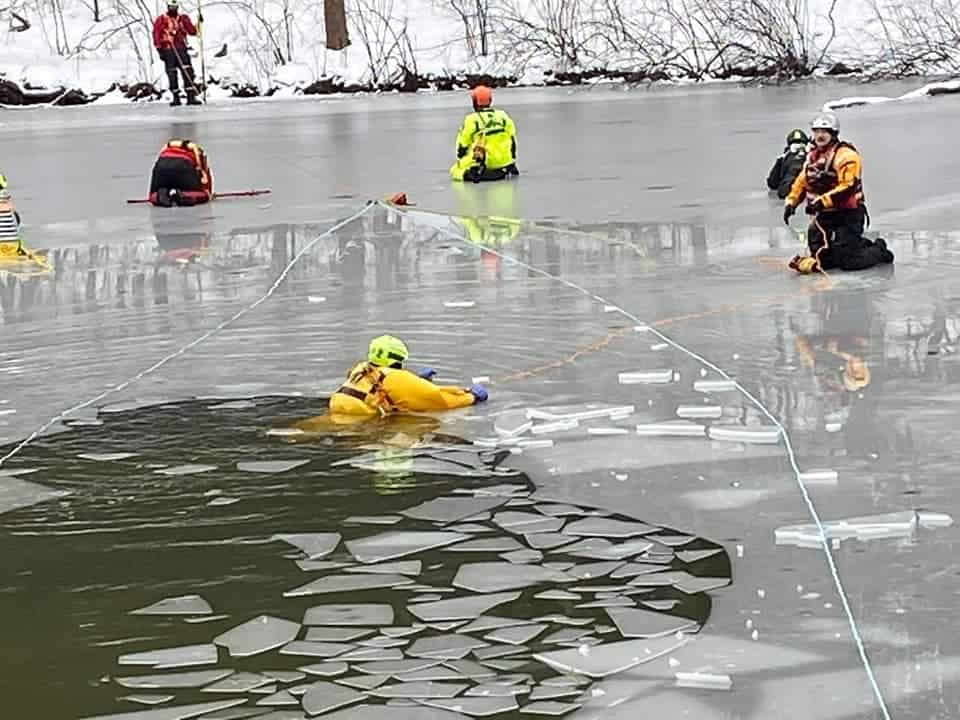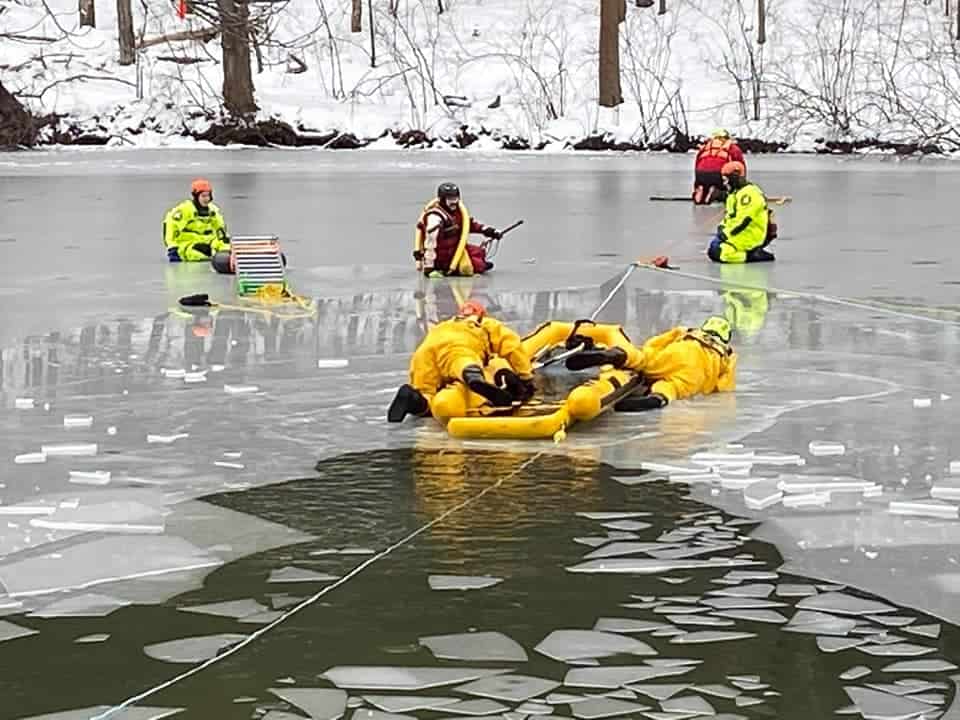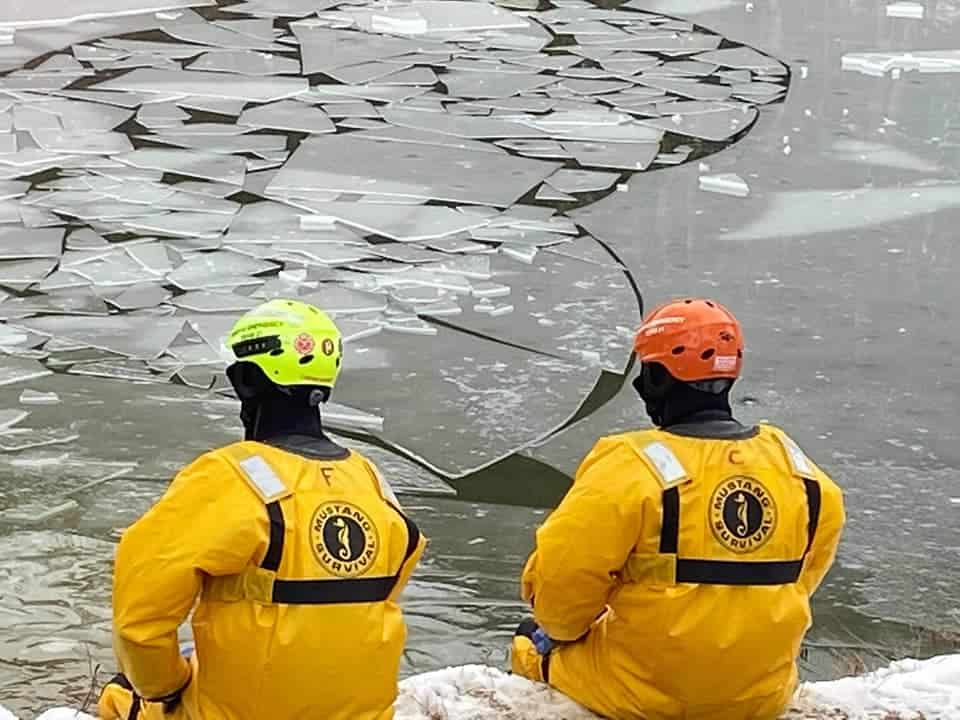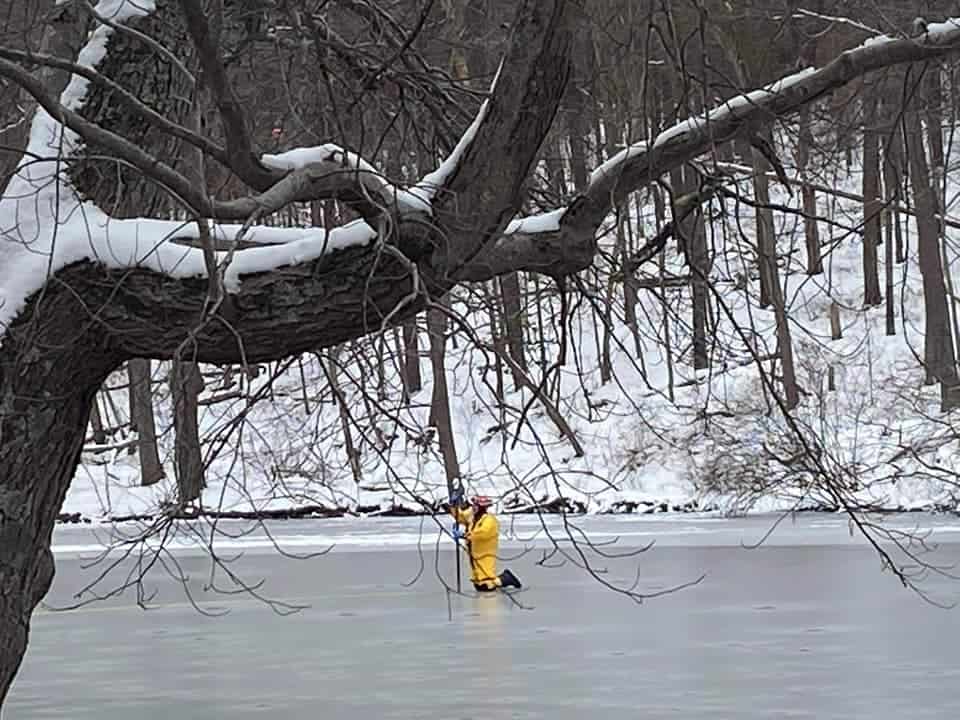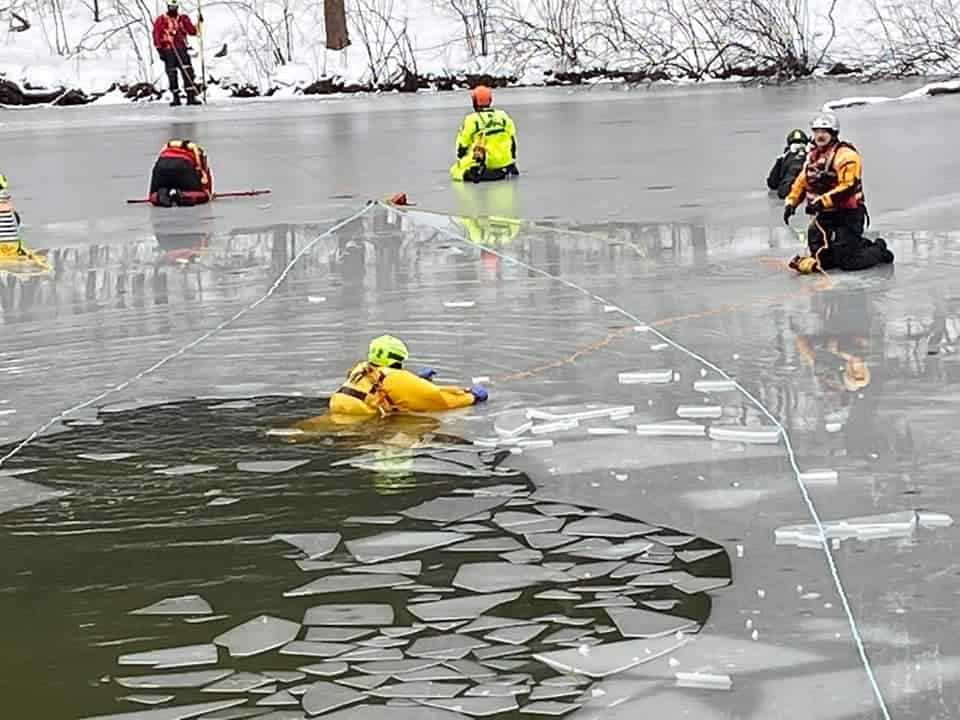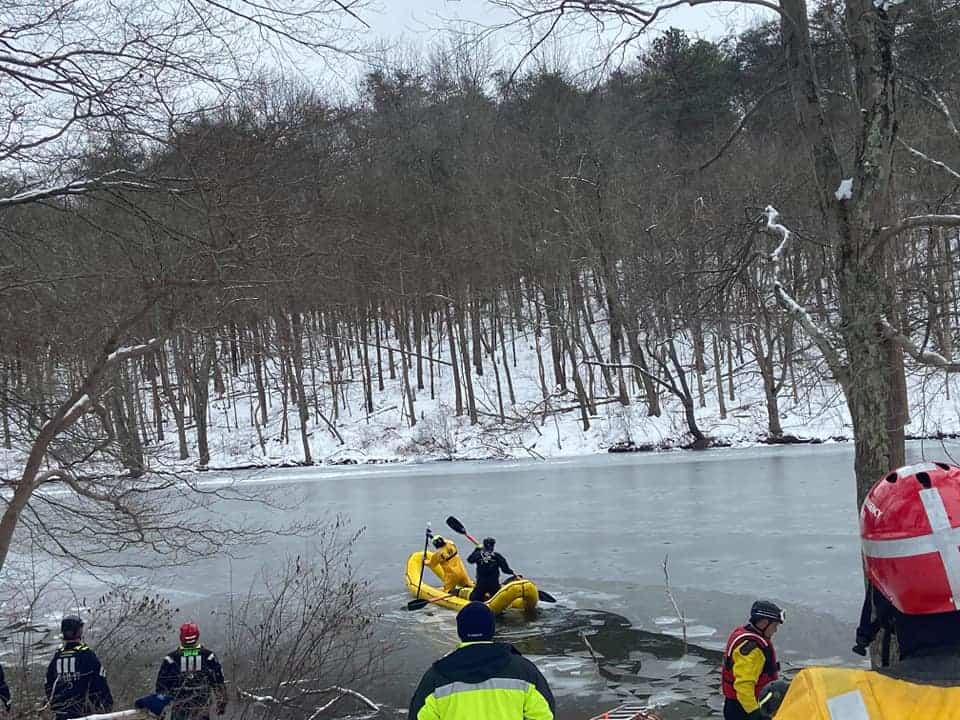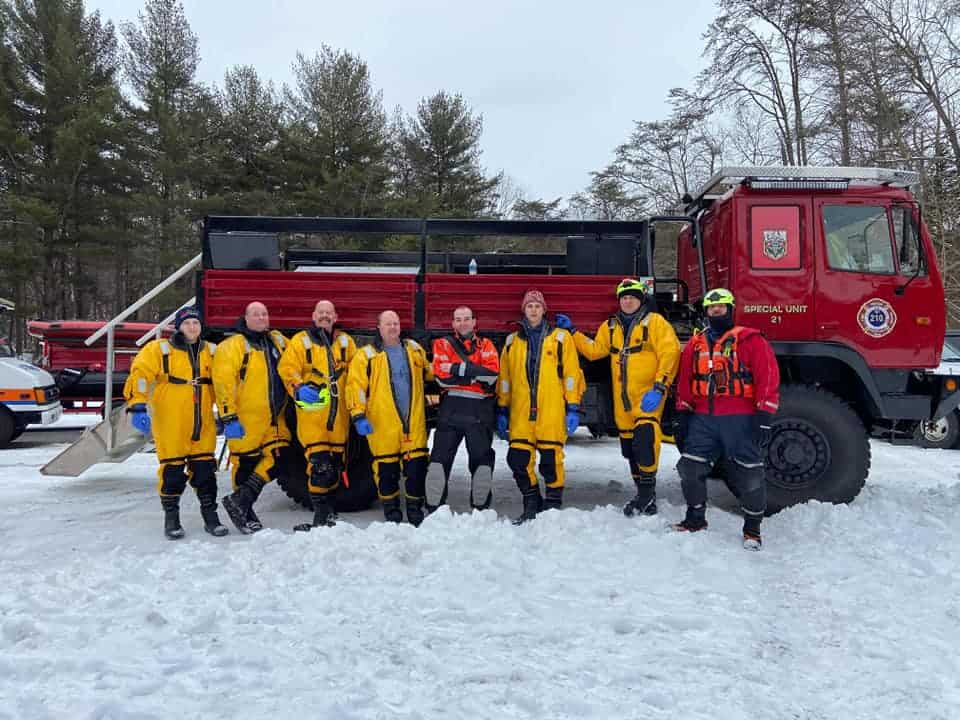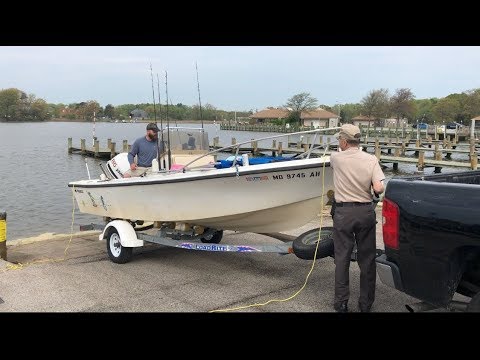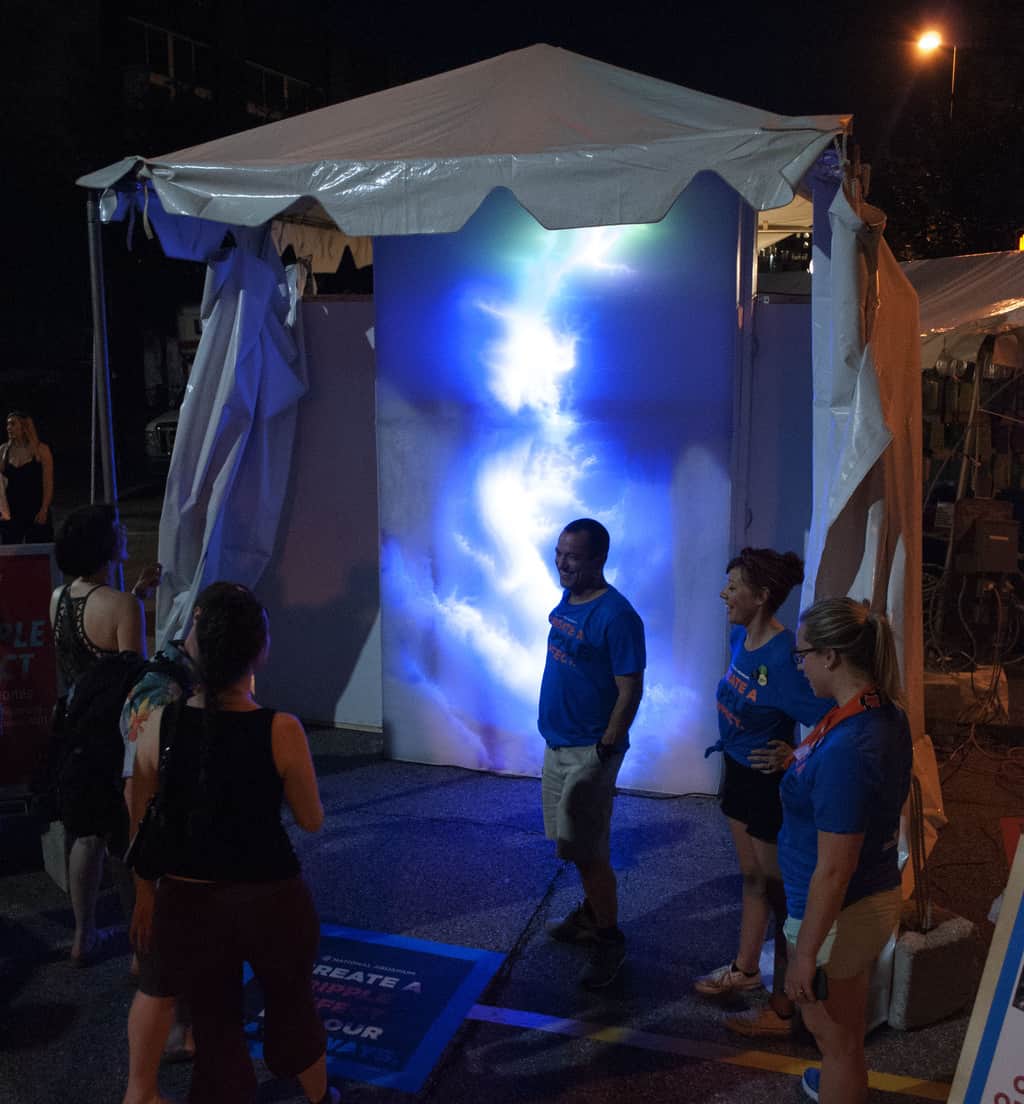The images make you want to cringe. 3/4-inch-thick ice all around, people in the water, and rescue boats and swimmers moving in. Thankfully, it’s just a drill.
Marine Emergency Team 21 (MET21) , the all-volunteer first responders for Baltimore-area waterways and the upper Chesapeake, voluntarily set out in last Saturday’s unpleasant conditions (freezing rain and sleet with below-freezing air temperatures) for an ice-rescue training exercise.
MET21 was invited by Baltimore County Fire Department’s Urban Search and Rescue to a group training event at Prettyboy Reservoir. A few of the team’s top technicians helped deliver the program.
“Some fire departments only have dry suits, ropes, and basic fire department tools. We need to be able to teach them to use that to be able to make a rescue, also teach them to self rescue, so if it’s a situation where they fall through the ice, they can continue access to the victim,” Chief Shannon Stallings tells Bay Bulletin.
The groups conducted multiple training exercises and simulated rescues with one thing in common: they revolve around someone falling through the ice. This ice layer, less than an inch thick, doesn’t come close to safely supporting an adult’s body weight. That would take four inches of solid ice.
Instead, rescuers practiced sliding on their bellies so as not to fall through. They wore cold water emergency suits called “ice commander suits”, similar to dry suits with added insulation.
Click through the photos below, courtesy of Marine Emergency Team 21:
While this training exercise was staged at Prettyboy Reservoir on the Gunpowder River, rather than on the navigable waterways MET21 where usually responds, Chief Stallings says the team is always looking for opportunities to train—they must go where the ice is.
“This year we may only have ice intermittently over the course of two or three weeks, but the important thing is that we be prepared,” says Chief Stallings.
The last time MET21 took part in this kind of extreme training was February 2020 in Middle River. They used boat slips as training grounds:
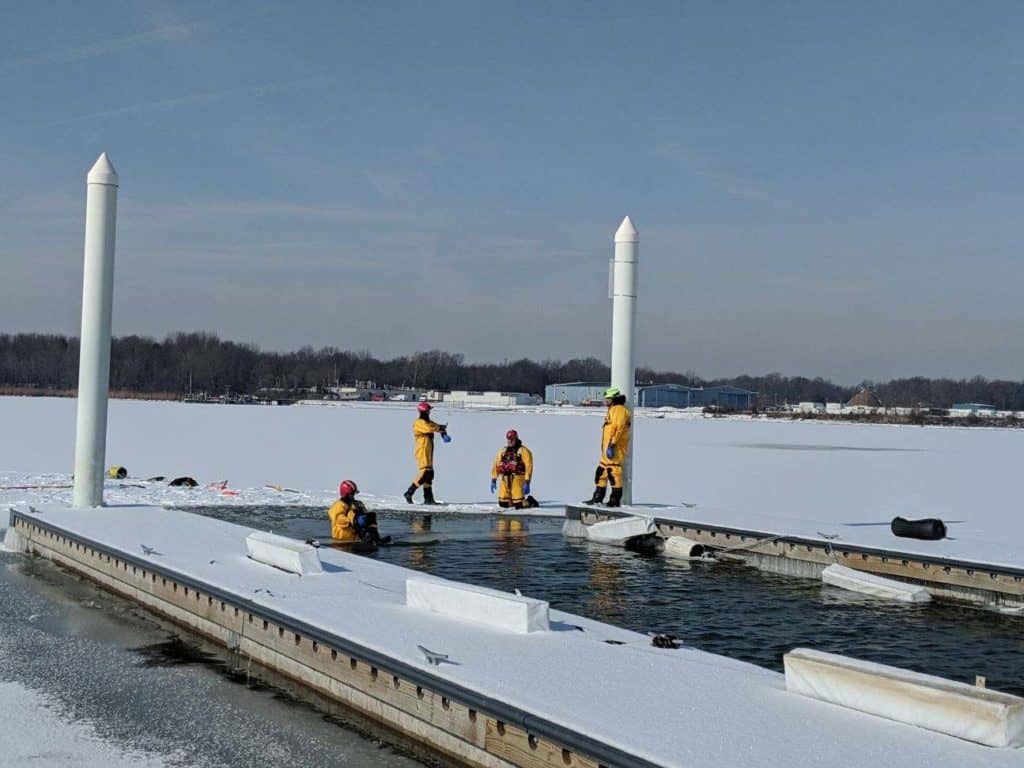
And it was a terrifying incident on Middle River back in 2009 that prompted MET21 to expand their ice rescue program to be one of the more advanced in the region.
In 2009, a person fell through the ice while chasing their dog. Local fire departments borrowed a rowboat to try and reach the victim, Chief Stallings says, but the rowboat became stranded too. MET21 was able to break ice with their fireboat and access the stranded people.
“It was dangerous, we were not prepared, but it worked,” Stallings says.
MET21 sought professional training and now has over $20,000 in ice rescue equipment. Marine Emergency Team 21’s Ice Rescue Program is 100% funded by donations. To learn more or support the program, visit marineteam21.org.
-Meg Walburn Viviano

